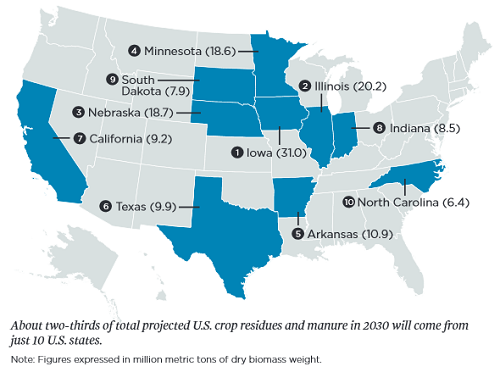Crop residues and manure hold great potential as bioenergy sources, especially in areas such as the Midwest where row crops and livestock provide all the ingredients. This report from the Union of Concerned Scientists (UCS) says those resources will need some help, though, from the right policies, practices, and investments.

UCS analysis finds that by 2030, U.S. farmers could sustainably produce up to 155 million tons of crop residues, many times the current level of production. U.S. livestock could produce another 60 million tons of manure, to be turned into clean-burning biogas.
The right policies, practices, and investments will help these clean energy sources realize their potential—with huge benefits for farmers, communities, and the environment…
Fuel and electricity made from agricultural biomass is potentially clean too. With the right practices, ethanol made from crop residues can produce 90 percent fewer lifecycle emissions, compared to gasoline.
Many states could significantly scale up their use of crop residues and manure. The largest include Iowa, a leading producer of corn ethanol, and Arkansas, the nation’s top rice producer.
Texas and California offer a lot of potential as well because of those states’ large agricultural outputs.

